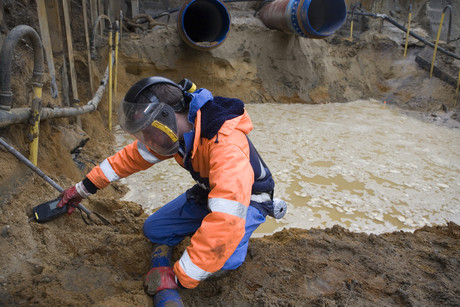Going beyond the environmental impact statement
By Robin Ormerod, Managing Director, EnviroSuite
Saturday, 01 April, 2017

Before any large-scale construction project is approved, authorities are certain to require the preparation of a comprehensive environmental impact statement. Whether it’s the extension of a major highway, building a new airport runway, or the development of a shipping port, all the ways in which the surrounding environment could be affected must be assessed.
Such impact statements are complex documents that need to incorporate data about a diverse range of factors. First, the environmental conditions that exist prior to the project’s commencement must be carefully measured and documented. This could include everything from water quality in rivers and lakes, to soil quality, air quality and the health of any native birds and animals.
Once this has been completed, estimates must be made of the impact the completed project will have on this baseline data. Key questions need to be asked about how particular factors will change the environment and what steps can be taken to mitigate these changes. How will increased traffic levels on the new highway affect local bird life? What will rising aircraft numbers do to noise levels in the area? To what degree will extra shipping movements be detrimental to water quality and fishing areas?
Not a set-and-forget process
Unfortunately, for many large construction projects, after approval has been granted, their detailed environmental impact assessment report becomes little more than a document of record. The company agrees to adhere to any conditions of the construction approval relevant to the impact assessment, but then focus shifts to the project itself. Little attention is given to whether or not the estimated impacts occur, or are actually exceeded.
To overcome this it is important for construction companies to incorporate the ability to undertake ongoing monitoring into their project designs. During the construction phase, a network of sensors should be deployed that can collect data about key variables and feed this back to a central store for analysis.
The type, number and location of sensors will vary depending on the nature of the construction project. For example, when building the highway extension, some could be placed on light poles to monitor air quality and noise levels. Others could be embedded in the roadway itself to monitor traffic volumes at particular times of day.
In the airport project, sensors could be placed at the boundary of the facility to monitor the air quality and noise conditions being experienced in the surrounding environment. In the shipping port, they could be attached to moored buoys and detect changes in water quality and aquatic noise levels that could affect local fish stocks.
Ongoing data analysis
Data from these sensor networks can then be combined with data from other sources. This could include weather conditions and forecasts, feedback from local communities and incident reports, and operational data about the new facility itself.
Once all this data has been collected, sophisticated analysis tools can be put to work to identify trends. These can then be compared with the original impact statement to see exactly how the new facility is affecting the surrounding areas.
These tools can also undertake ‘what if’ scenario planning to determine how changes in external conditions could change the impact of the facility. For example, how could forecast heavy rain cause changes in the port’s water quality? To what degree will strong winds shift pollution from aircraft into a nearby residential area?
Depending on the tools being used, many of the results can be provided in graphical form, and overlayed on maps of the area. This allows staff to clearly see the effects that operations are having and any problems that have been predicted before they occur.
Armed with these data-based predictions, operators can make informed decisions about their facility. By combining data from sensor networks with that created by the facility’s infrastructure, a clear picture can be created of the impact that changes in operations has on the surrounding environment. Decisions can then be made in real time on whether factors need to be changed to improve conditions.
For example, a decision may be taken to divert traffic to a different motorway until atmospheric conditions change or noise levels can be brought back below those required by the original approval. Or perhaps shipping arrivals need to be halted during a forecast period of higher than normal rainfall.
Better outcomes for all parties
Access to real-time data on the impact of operations can also make it easier for operators to respond to complaints from external parties. Residents close to an airport may report higher than usual pollution or noise levels which can be quickly mapped against change in runway use. Reports from fishermen of falling catch numbers can be linked to a surge in shipping numbers.
By being better informed, thanks to access to real-time data from a variety of sources, operators of facilities can become much more proactive in the way in which they are managed.
By going beyond a ‘set-and-forget’ environmental impact statement, those responsible for the ongoing operation of new assets can be confident they are adhering to the set standards throughout its operational life. This will result in better outcomes for all parties involved.
Embedding environmental stewardship into IT governance frameworks
A proactive approach can reduce an organisation's ecological footprint, improve operational...
Aust companies unprepared for mandatory climate disclosure
From 1 July, large businesses must reveal their emissions plans and targets, yet many are already...
The path to decarbonisation: collaborative change for our cities
From all-electric buildings to green rooftops, our precincts are living, breathing testbeds for...










